

Quick list
Bell Peppers, Carrots, Corn, Cucumbers, Kale, Radishes, Summer Squash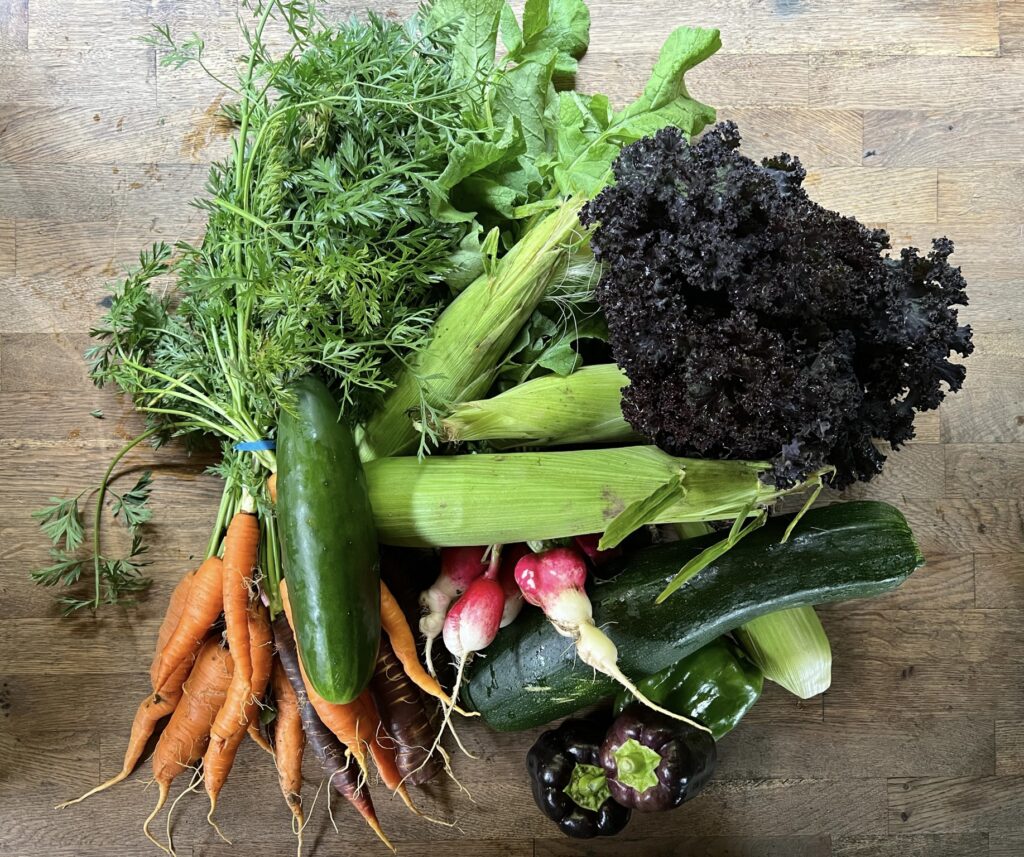
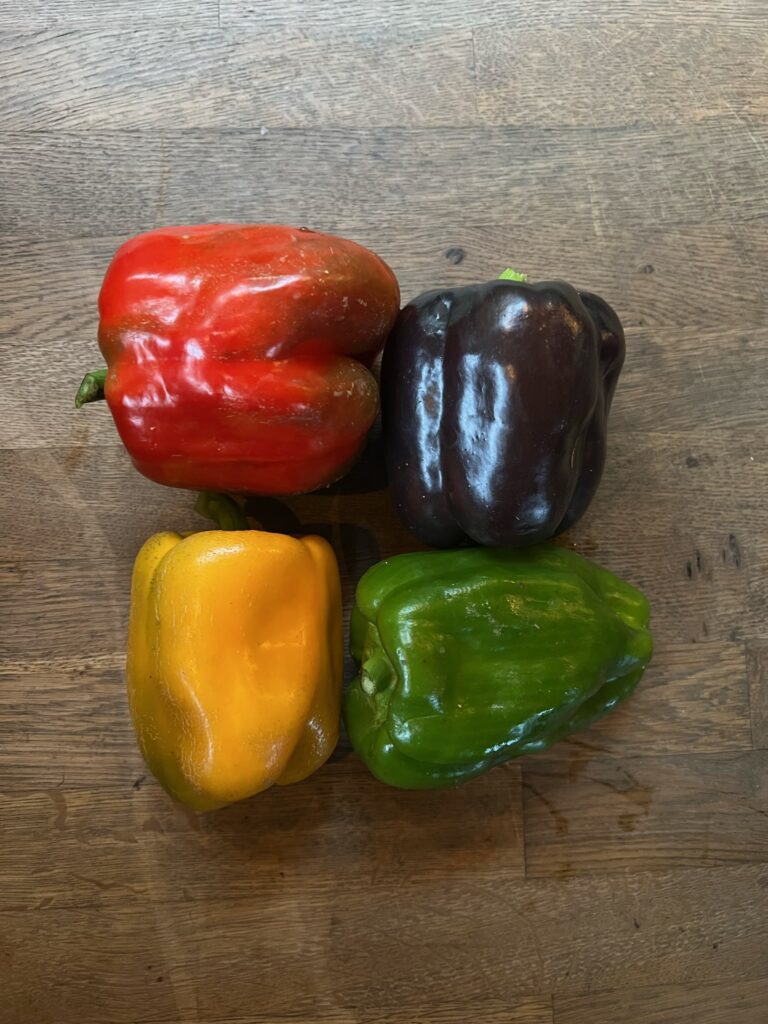
Bell peppers are colorful and crisp vegetables that belong to the nightshade family. These versatile peppers come in various hues, including green, purple, red, yellow, and orange, with each color offering slightly different flavor profiles, from the grassy and mildly bitter taste of green peppers to the sweet and fruity notes of their more colorful counterparts. Whether enjoyed raw in salads, stuffed with savory fillings, sautéed in stir-fries, or roasted to enhance their natural sweetness, bell peppers are a culinary staple celebrated for their versatility, nutritional value, and culinary appeal.
Please refrigerate.
Rinse. Remove seeds. Eat raw or cooked. Roast or blanch to remove skin.
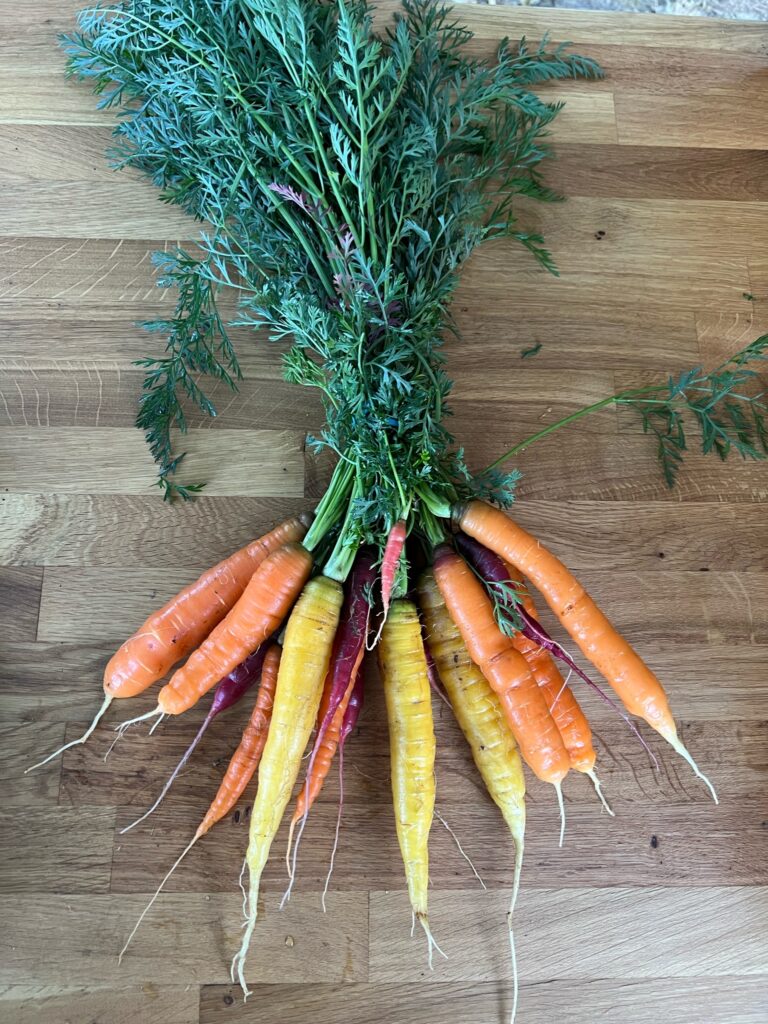
Carrots are vibrant root vegetables known for their distinct crunchy texture and sweet, earthy flavor. They come in various colors, including orange, purple, yellow, and white. Carrots have a satisfyingly crisp bite and a subtly sweet taste that is enhanced when cooked. Whether enjoyed raw as a snack, grated into salads, roasted to bring out their natural sweetness, or used as a flavorful ingredient in soups, stews, and stir-fries, carrots provide a versatile and nutritious addition to a wide range of dishes.
We love growing every color of carrot! Atomic reds might be our favorite. They are the red carrots. Which color is your favorite?
Keep in the fridge. If you plan on storing them longer than a week, remove the greens and the carrots will stay crisp.
Rinse. The whole carrot is edible, including the leaves and root. Carrots can be enjoyed raw or cooked. If the leaves start to wilt, you can revive them by soaking them in ice water for a few minutes, then pat them dry and use as desired.
Freezing: Peel and slice or chop the carrots into desired sizes. Blanch them by briefly boiling in water and then plunging them into ice water to stop the cooking process. Drain well and place the blanched carrots in freezer-safe bags or containers. Label and date them before placing them in the freezer. Frozen carrots can be used in cooked dishes such as soups, stews, and stir-fries.
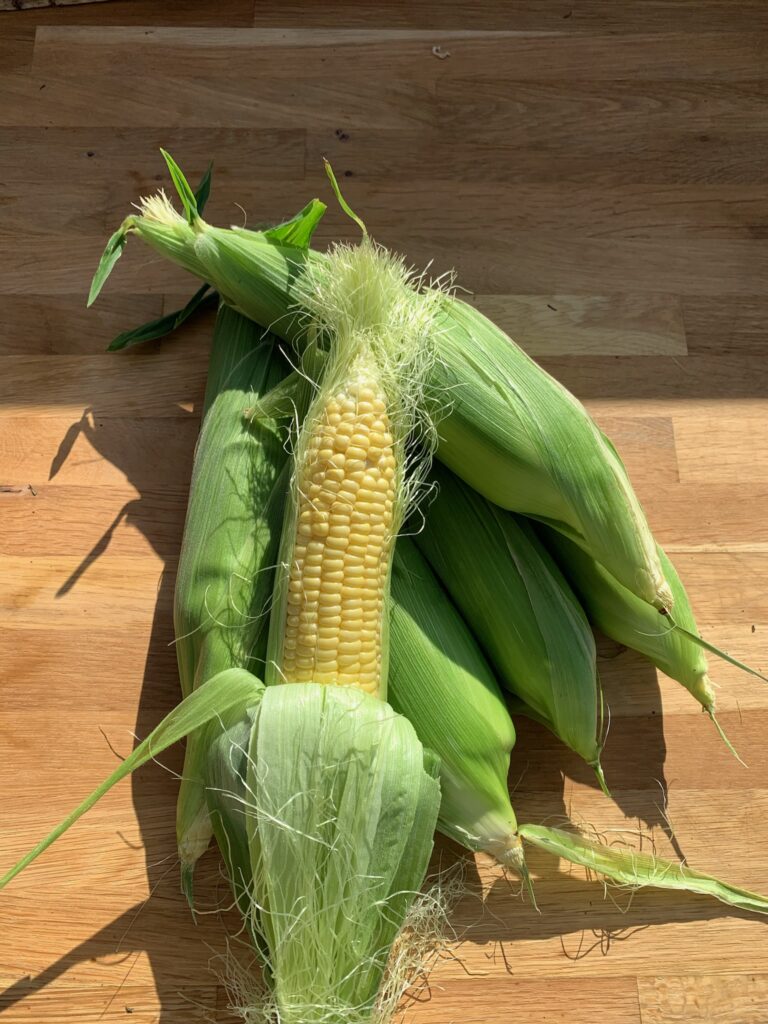
Corn on the cob is a quintessential summer treat, featuring tender, sweet kernels tightly nestled on a round cob. With a vibrant golden hue, each cob boasts a delightful mix of flavor and texture. Grilled, boiled, or steamed, corn on the cob exudes a satisfying crunch and bursts of sugary juice with every bite. Often adorned with a drizzle of butter, a sprinkle of salt, and a touch of herbs.
To ensure the best flavor and texture, it's recommended to use fresh corn on the cob right away. If you plan to wait, store the corn in a cool, well-ventilated place. Avoid exposing it to direct sunlight or high temperatures, as this can cause the kernels to dry out and lose their sweetness. If the husks are still intact, they can help protect the corn. If not, you can wrap the corn in a damp paper towel and place it in a plastic bag to prevent moisture loss. Using fresh corn promptly will provide you with the optimal taste and crunch that this seasonal delight offers.
Remove husks, unless you are grilling. Cook on the cob or remove the kernels.
This is our favorite tool to remove the kernels! Works great when raw or cooked.
Freezing: Start by blanching the corn in boiling water for a few minutes, then quickly transferring it to an ice bath to cool. Once cooled, cut the kernels off the cob and pack them into airtight freezer bags or containers. Label and date them before placing them in the freezer. Frozen corn can be used in soups, stews, casseroles, or as a side dish.
How to use
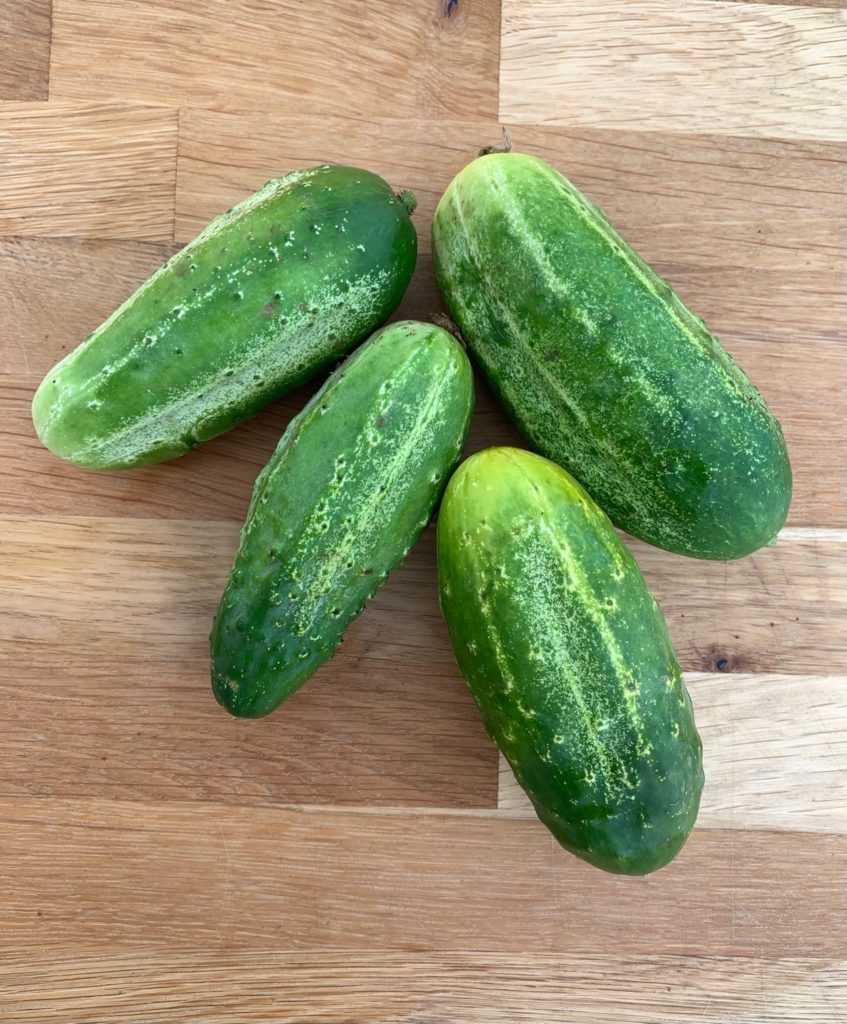
Cucumbers are a crisp and refreshing vegetable with a mild, subtly sweet flavor. They have a high water content, which gives them a hydrating and cooling quality. The flesh of cucumbers is pale green and juicy, with a crisp texture. They are commonly enjoyed fresh in salads, sandwiches, and wraps, or sliced as a refreshing snack.
Please refrigerate.
Rinse. Eat raw or cooked.
Pickling: To make refrigerator pickled cucumbers, start by washing and thinly slicing the cucumbers. Place the cucumber slices in a clean, sterilized jar or container. In a separate bowl, combine equal parts of water and vinegar (such as white vinegar or apple cider vinegar) along with salt and sugar to taste. Stir until the salt and sugar dissolve completely. You can also add spices like dill, garlic, mustard seeds, or red pepper flakes for extra flavor. Pour the vinegar mixture over the cucumber slices, making sure they are fully submerged. Place a lid or cover on the jar and refrigerate for at least 24 hours to allow the flavors to develop. The pickled cucumbers will keep well in the refrigerator for up to a few weeks, and they can be enjoyed as a tangy and refreshing snack or used as a topping for sandwiches, salads, or tacos.
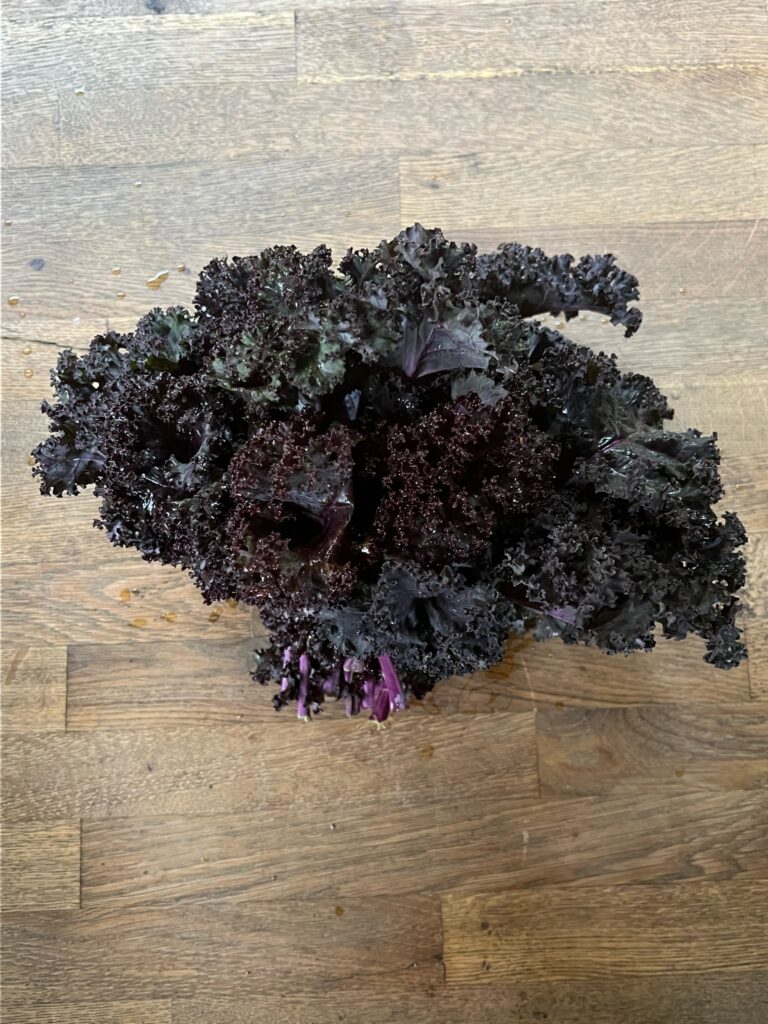
Kale, a robust and nutrient-packed leafy green, is celebrated for its earthy flavor and distinctive curly or flat leaves. This versatile superfood is rich in vitamins, particularly vitamins A, C, and K, as well as minerals like iron and calcium. Known for its slightly bitter and peppery taste, kale can be enjoyed in various culinary forms, from tender baby kale in salads to hearty mature kale sautéed, blended into smoothies, or baked into crispy kale chips. Its remarkable nutritional density and adaptability make kale a staple in health-conscious diets and a valuable addition to a wide range of dishes, contributing not only flavor but also an abundance of essential nutrients.
Rinse. Eat raw or cooked. Stems take longer to cook. I like to remove them and cook longer than leaves.
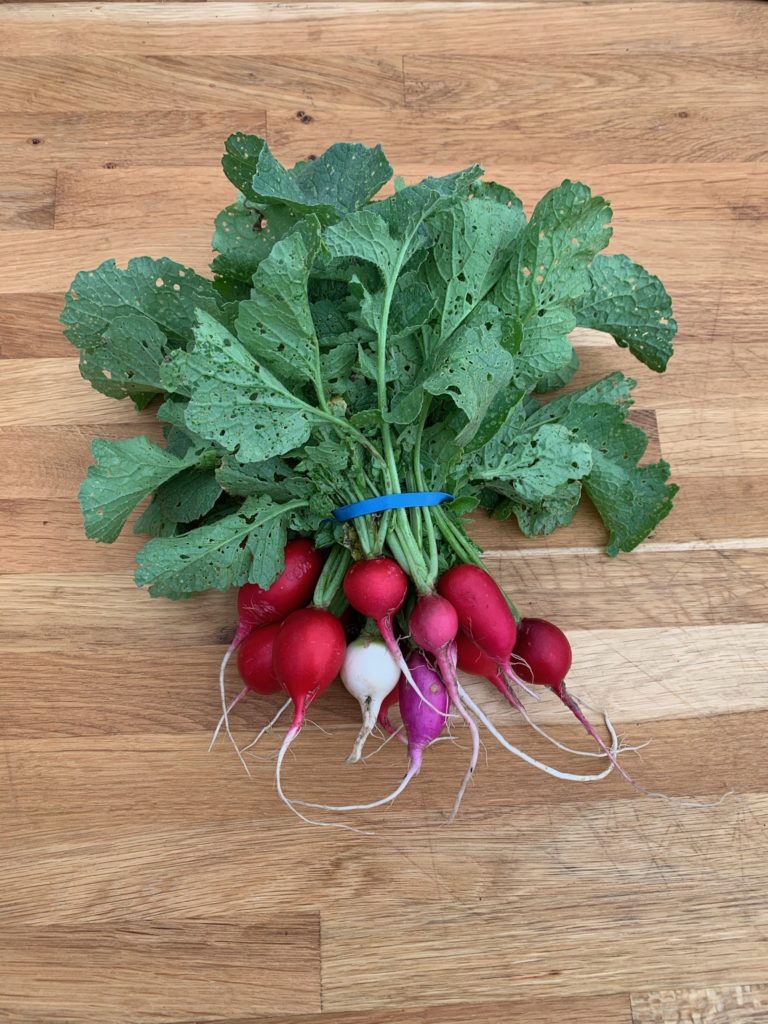
Radishes are small root vegetables known for their crisp texture and slightly peppery flavor. The flesh of radishes is typically firm, crunchy, and juicy, while the skin can range from smooth to slightly rough. They can be enjoyed raw as a snack, sliced and added to vegetable platters, or used as a garnish. Radishes also offer versatility in cooking, as they can be roasted, sautéed, or pickled to enhance their natural flavors. Rinse. Eat raw or cooked.
Remove greens for radishes. The leaves will continue to draw moisture from the root. Store the radishes and greens separately.
It's best to use the greens within a few days for optimal flavor. To store the greens, place unwashed leaves in a container lined with a dry paper towel to absorb excess moisture. Seal the container loosely to allow for some airflow. Store in the fridge. Here it will stay fresh for a few days.
Radish roots can keep for several weeks, sometimes even months, when stored in the fridge.
Rinse. The whole radish is edible, leaves and root. Eat raw or cooked. If the leaves start to wilt, you can revive them by soaking in ice water for a few minutes before patting them dry and using as desired.
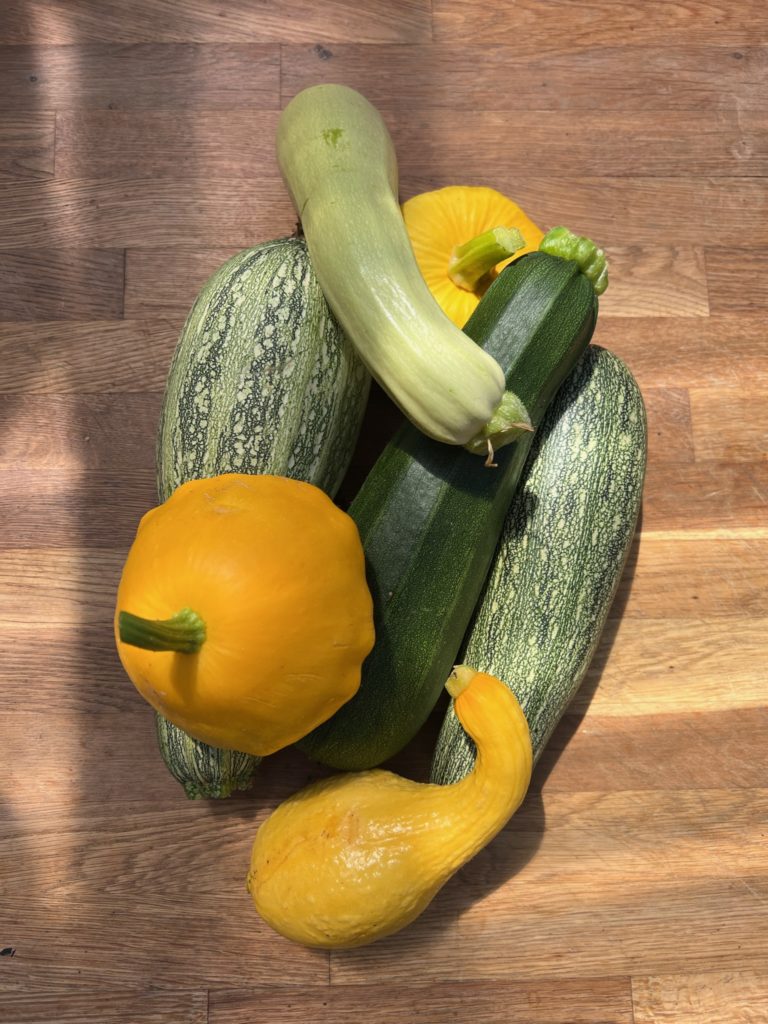
Summer squash refers to a variety of tender, edible gourds that are harvested during the summer months. They typically have a vibrant, yellow or green skin and a mild, slightly sweet flavor. Summer squash comes in various shapes, including elongated, cylindrical zucchini and round or bulbous varieties like pattypan and yellow crookneck squash. The flesh is tender and succulent, with a delicate texture that holds up well in both raw and cooked preparations.
Rinse. Eat raw or cooked.
Handle gently. The skin is thin and fragile. Keep on the counter and use within a week. If you aren't going to use them right away keep in the refrigerator.